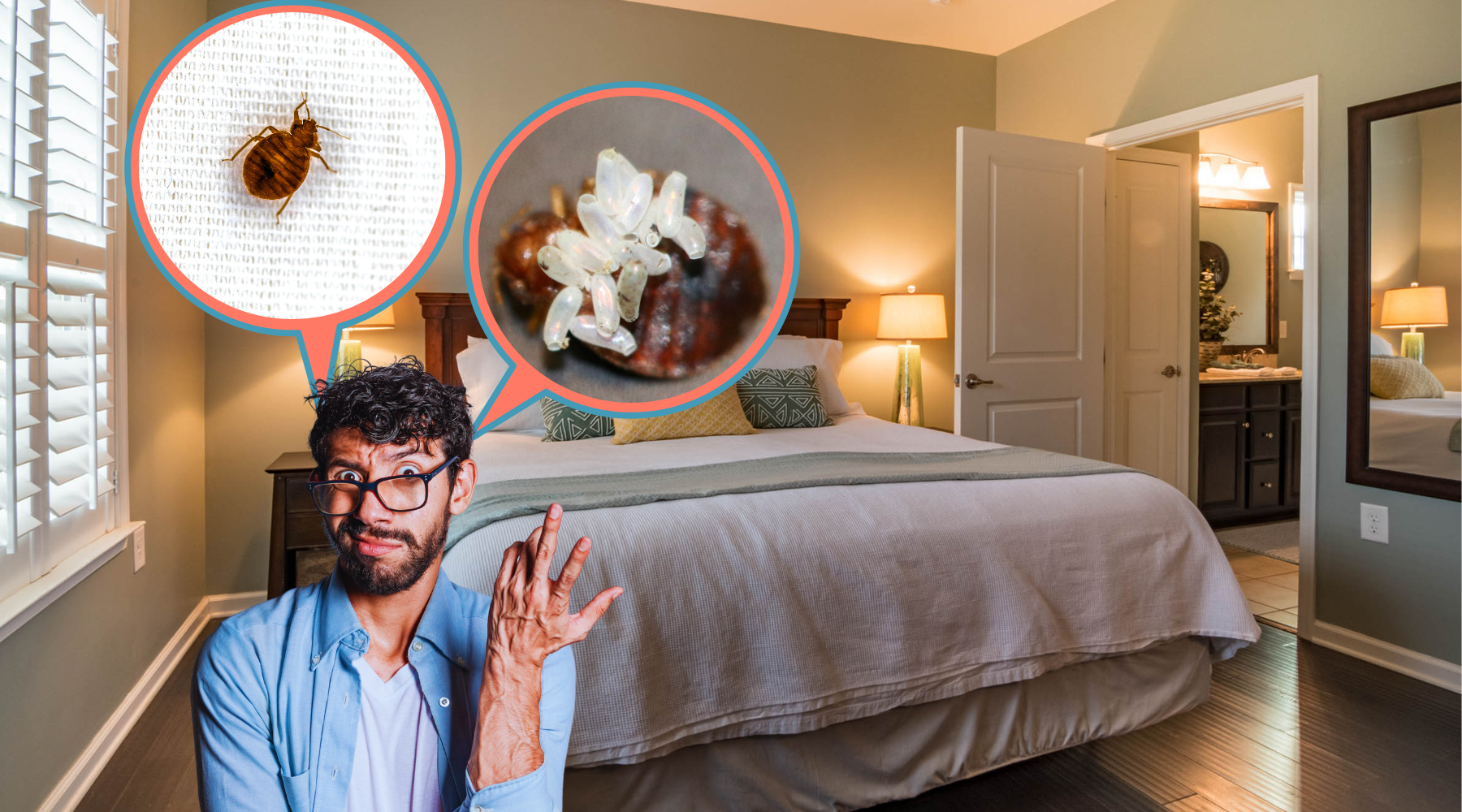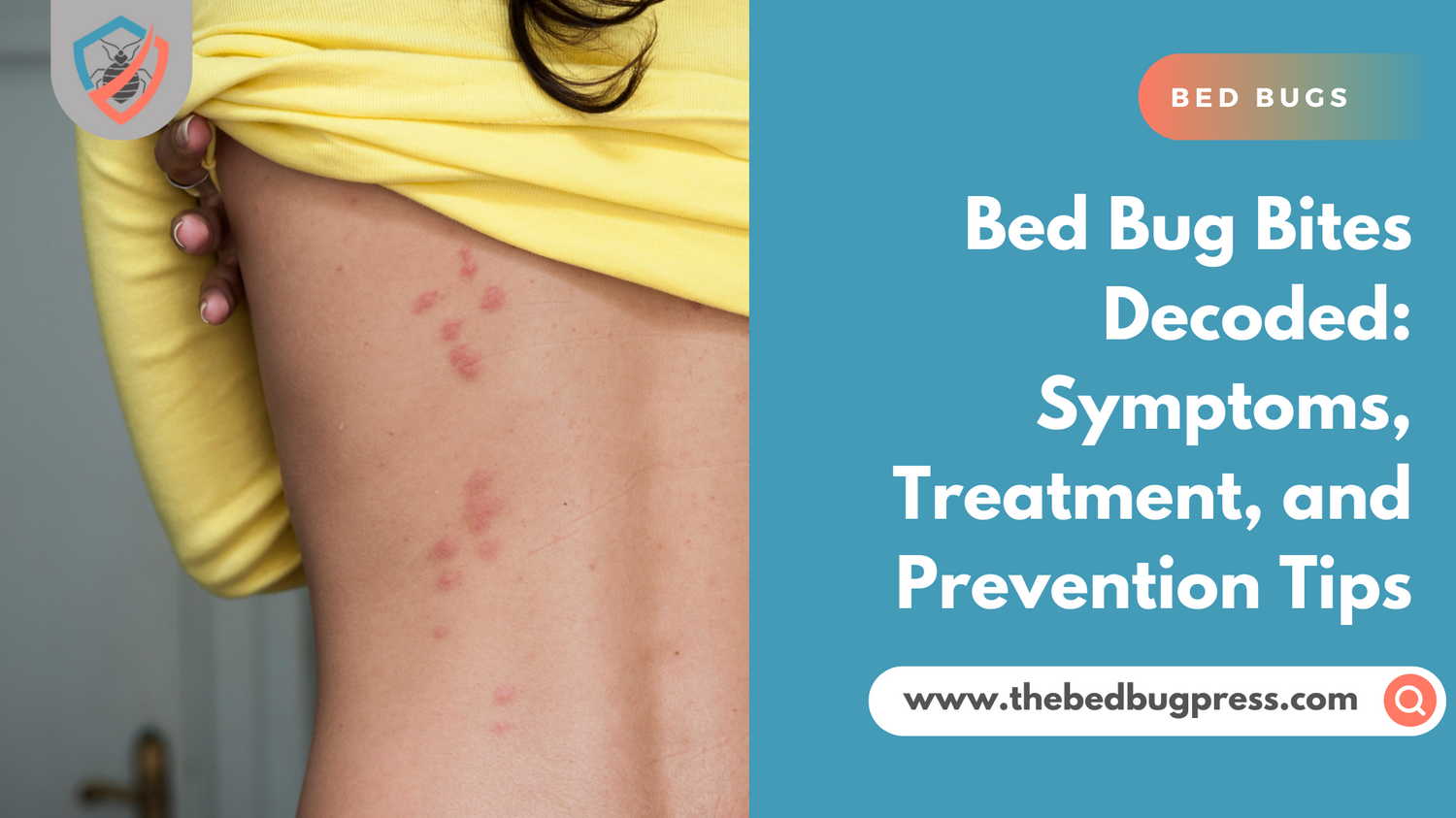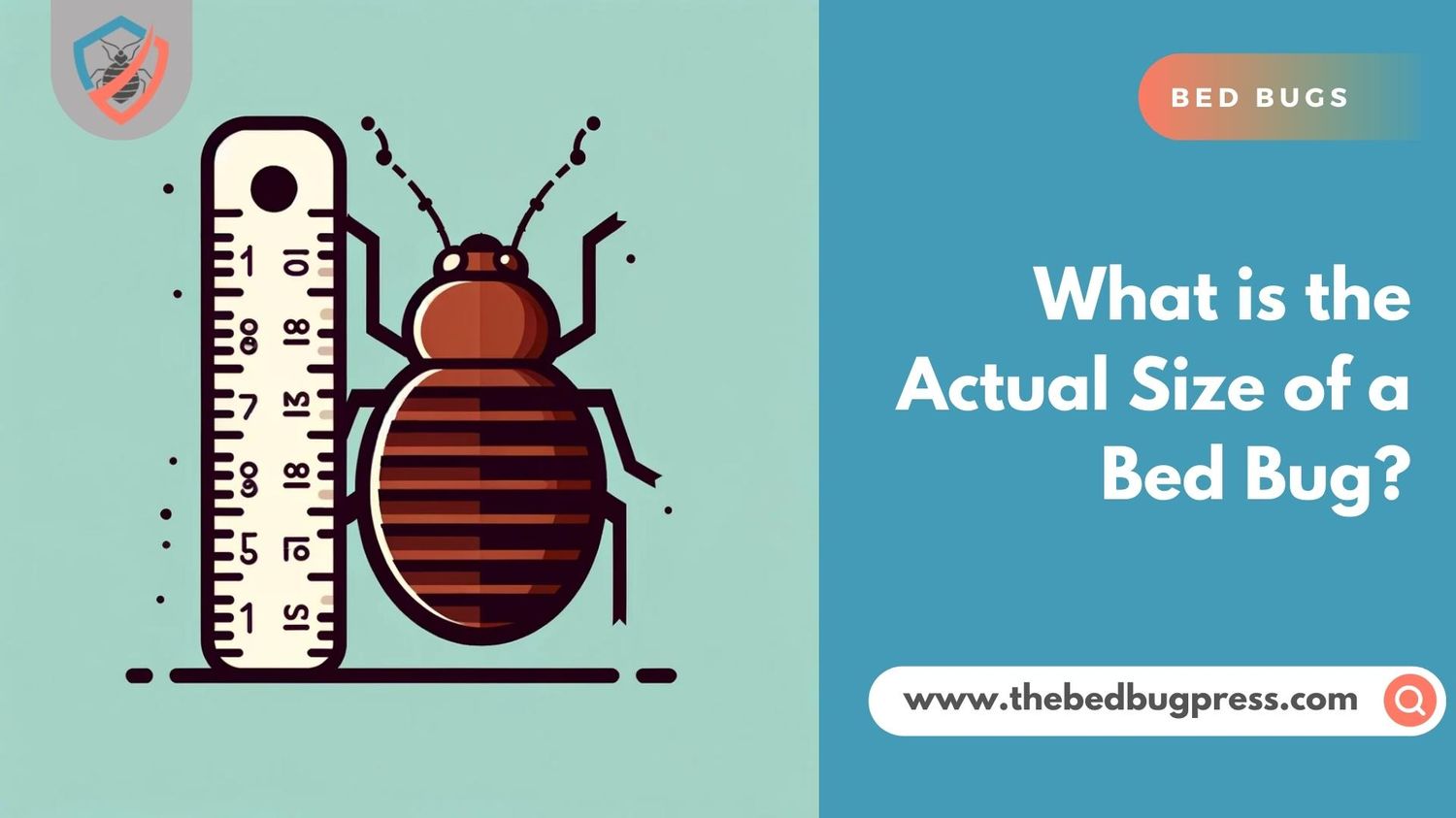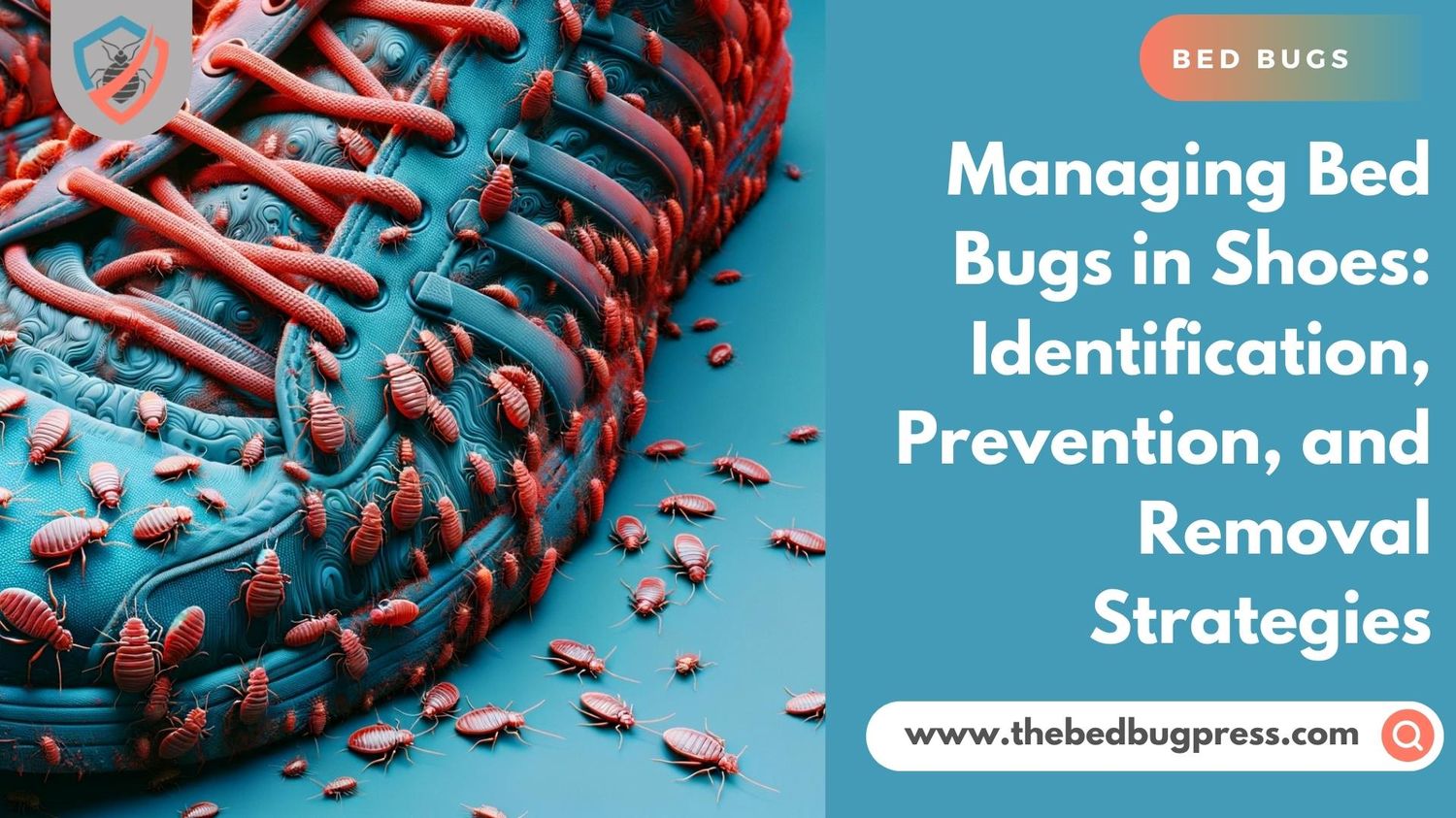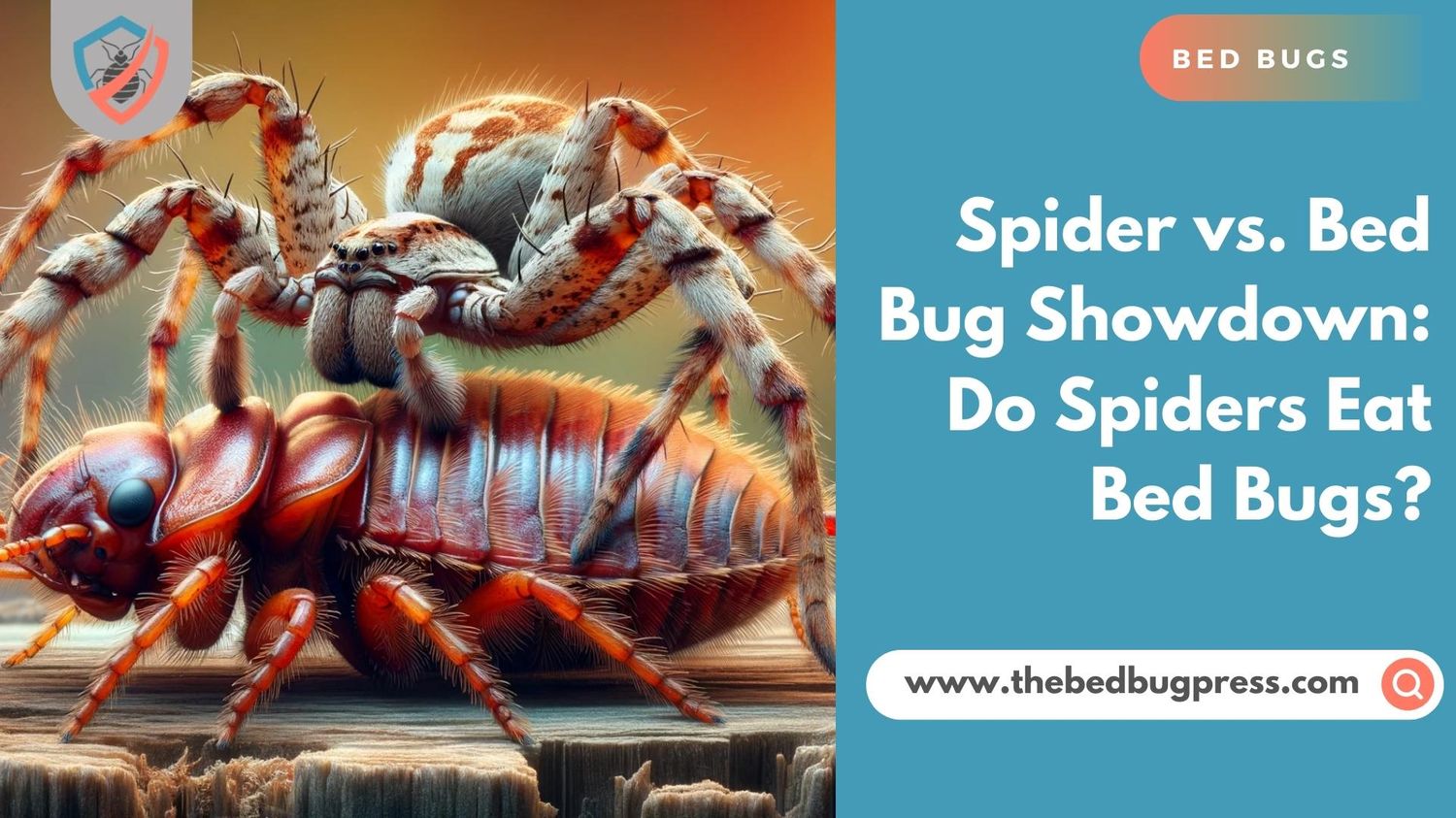Many people are interested in finding the most effective ways to kill bed bugs and bed bug eggs. For those seeking relief from a bed bug infestation, there are several methods available including chemical treatments, natural remedies, vacuuming, and freezing techniques. This article will explore the different ways to successfully eradicate bed bugs and bed bug eggs from your home.
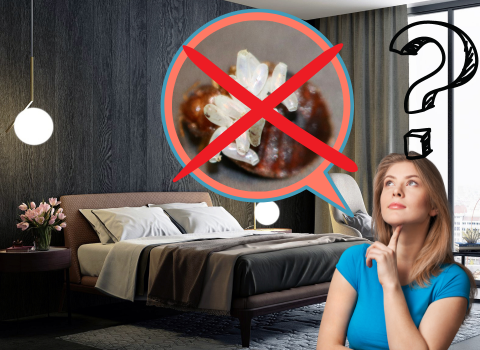
How To Eliminate Bed Bugs and Bed Bug Eggs in Your Home
Adult bed bugs and bed bug eggs can be a nuisance to have in your home. They thrive in dark and warm environments, making it difficult to find and remove them completely. While there are a few methods that can help eradicate adult bed bugs, a combination of various techniques is often necessary to eliminate bed bug infestations from your home.
Here are some tips to help you get rid of bed bugs and bed bug eggs:
Use Chemical Treatments
Chemical treatments are one of the most effective ways to get rid of bed bugs but should always be used with caution as they pose health risks.
Consider Natural Home Remedies
Some natural remedies can help get rid of adult bed bugs and bed bug eggs. These include using rubbing alcohol, essential oils, baking soda, and diatomaceous earth.
Utilize Vacuuming
Vacuuming can be effective in eliminating bed bug eggs and adults from carpets, upholstery, pet beds, and other areas they may hide in your home.
Try Freezing Methods
Using cold temperatures can help kill off eggs and adult populations within 48 hours. This is done through the process known as cryonite freezing.
By utilizing these methods combined or individually you will be able to successfully exterminate bed bugs and bed bug eggs from your home once and for all!
Tips for Removing Bed Bugs and Their Eggs Safely
Removing adult bed bugs and bed bug eggs is important to help protect your health and home from infestations. Here are some tips to help you remove them safely:
Follow Manufacturer Instructions
When using chemical treatments, always make sure to follow the instructions exactly as directed on the label.
Wear Protective Gear
It’s important to wear protective gear such as gloves, masks, goggles, and other protective clothing while conducting bed bug extermination treatments.
Check Frequently for Adult Bed Bugs
Make sure to check regularly for new signs of bed bug activity and treat any areas that appear to be infested.
Clean Infested Areas Thoroughly
Be sure to wash all linens, furniture covers, and other materials that may have been exposed to hot water and dry them thoroughly afterward.
Avoid Contamination of Other Rooms
When treating an area with bed bugs, take steps to ensure that they do not spread into adjoining rooms or spaces.
By following these tips, you can help ensure that you are removing bed bugs and bed bug eggs safely from your home.
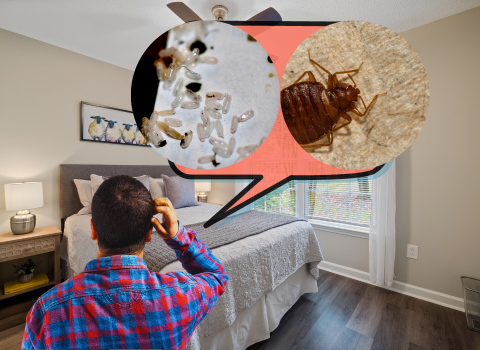
Permanent Solutions to Eradicating Bed Bugs and Their Eggs
Getting rid of bed bugs can be a real headache, but don’t worry – there are ways to eliminate them for good! Professional treatments such as fumigation or steam are often the most effective methods, and you can also use heat treatment to kill off adults and eggs in just 48 hours.
Sealing up cracks and crevices will help to prevent infestations from returning, while regular cleaning and inspections of your home can pick up signs of activity quickly. Natural remedies like rubbing alcohol or essential oils can also help keep bed bugs out of your home. By following these strategies, you can ensure that you say goodbye to bed bugs and enjoy a bug-free living space!
Non-Toxic Solutions to Get Rid of Bed Bugs and Their Eggs
Dealing with bed bugs can be a real pain, but don’t worry, there are ways to get rid of them naturally without resorting to harsh chemicals! Here are some tips to help you out:
Use Essential Oils
Essential oils are a great natural way to fight bed bugs since many of them contain compounds with insecticidal properties. So, consider using oils like lavender, tea tree, or peppermint to keep these pesky bugs at bay.
Vacuum Regularly
Vacuuming regularly is an important step in preventing bed bug infestations. Make sure to vacuum your carpets and furniture frequently to remove any existing populations or eggs. And don’t forget to empty the vacuum cleaner bag outside your home to prevent any escaping bugs from coming back.
Heat Treatment
For more severe bed bug infestations, heat treatment is a great option. This involves using high temperatures to kill off adult populations and eggs within 48 hours. You can use a portable heater or hire a professional service to do the job.
Steaming Method
Another effective natural method to remove bed bugs is by using a steam cleaner or vapor steaming machine. These can be used on areas such as mattresses, box springs, carpets, furniture, and other areas of your home where bed bugs might hide.
Natural Remedies
You can also try using natural remedies like rubbing alcohol or baking soda on surfaces where there is evidence of bed bug activity. These remedies can help to kill off the bugs and reduce their population.
By following these natural strategies, you can help ensure that you eradicate bed bugs and bed bug eggs without exposing yourself or your home to harsh chemicals. Good luck!
Natural Home Remedies for Dealing with Bed Bugs and Bed Bug Eggs
Dealing with bed bugs can be a real headache, and no one wants to expose themselves to harsh chemicals to get rid of them. Luckily, there are natural home remedies that can help you eliminate bed bugs and bed bug eggs without harsh chemicals! Here are a few of our favorite natural remedies:
Diatomaceous Earth:
This natural powder made from fossilized algae is an effective way to dehydrate and kill bed bugs and eggs. Just sprinkle it on areas where bed bugs are present.
Tea Tree Oil:
This essential oil has insecticidal properties that can repel and kill bed bugs. Mix it with water and spray it on bed frames, furniture, and other areas where bed bugs are hiding.
Lavender Oil:
This essential oil can also repel bed bugs. Mix it with water in a spray bottle and spritz it on bedding and around sleeping areas.
Baking Soda:
This common household item can help dry out bed bugs and their eggs. Sprinkle it on infested areas and vacuum it up a few hours later.
Rubbing Alcohol:
This natural disinfectant can kill bed bugs on contact. Pour it into a spray bottle and spray it directly on bed bugs and bed bug eggs.
Clove Oil:
This essential oil has a strong smell that bed bugs don’t like. Mix it with water and spray it on areas where bed bugs are hiding.
Just keep in mind that natural remedies may take a little longer to work than chemical treatments and may need to be applied several times to completely eliminate bed bugs and bed bug eggs. But with a little patience and persistence, you can say goodbye to bed bugs for good!
Organic Pesticides for Getting Rid of Bed Bugs and Their Eggs
If you’re looking for a more natural way to get rid of bed bugs and bed bug eggs, organic pesticides may be a good option for you. While these pesticides may not be as potent as chemical treatments, they are often considered safer for humans and pets.
Below are pesticides that can be used in infested areas to help control bed bugs and prevent future infestations.
Neem Oil:
This is a natural pesticide derived from the neem tree. It disrupts the bed bugs’ hormonal balance and prevents them from feeding and reproducing.
Pyrethrin:
This is a natural insecticide made from the chrysanthemum flower. It attacks the nervous system of bed bugs and other insects, causing paralysis and death.
Citronella Oil:
This essential oil has a strong odor that repels bed bugs. Mix a few drops of citronella oil with water and spray it on bedding and around sleeping areas.
Orange Oil:
This essential oil has insecticidal properties that can kill bed bugs on contact. Mix a few drops of orange oil with water and spray it on infested areas.
Peppermint Oil:
This essential oil can also repel bed bugs. Mix a few drops of peppermint oil with water and spray it on bedding and around sleeping areas.
Cedar Oil:
This essential oil has a strong odor that repels bed bugs and their eggs. Mix a few drops of cedar oil with water and spray it on infested areas.
Take note that organic pesticides may not be as effective as chemical treatments and may need to be repeated several times to eliminate bed bugs and bed bug eggs. Also, while these pesticides are considered safe for humans and pets, it’s still important to follow the manufacturer’s instructions and use them with caution.
Eliminating Bed Bugs and Egg Infestations Without Pesticides: Is That Possible?
Yes, it’s possible to get rid of bed bugs and bed bug eggs without using pesticides. Several natural methods can be used to help eliminate bed bug infestations, but it may take some time and effort.
One of the most common ways to fight bed bugs is with essential oils. Essential oils can contain insecticidal compounds that are effective in targeting and killing bed bugs. Another option is to vacuum regularly as this allows for the removal of existing populations or eggs.
For more severe cases, heat treatment can be used which involves applying high temperatures over 48 hours – long enough to kill adult populations and eggs. However, this approach may not be practical for large infestations or for items that cannot be exposed to high temperatures, such as electronics or certain fabrics.
Additionally, steaming and other natural remedies like rubbing alcohol or baking soda on surfaces may help get rid of bed bugs as well. Diatomaceous earth can be sprinkled on infested areas to dehydrate and kill bed bugs and bed bug eggs.
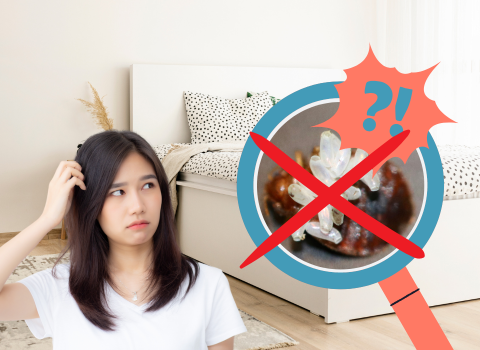
Also, washing and drying bedding and clothing at high temperatures can help eliminate bed bugs and bed bug eggs.
By utilizing natural strategies, you can ensure that any infestation has been eliminated without the need for dangerous chemicals or toxins!
What Kills Bed Bugs and their Eggs on a Mattress?
A mattress can be a great hiding place for bed bugs, meaning it’s important to make sure that you do all you can to get rid of any populations that may be present. Here are some tips to help remove bed bugs and bed bug eggs from your mattress:
Vacuum the Mattress
This is an important first step as it removes existing populations or eggs from the surface. Make sure to use a strong suction and take care when moving the vacuum around the edges of the mattress.
Steam Cleaning
Utilizing a handheld steamer or steam cleaner on your mattress is another effective way to fight off bed bugs. The hot steam helps to kill adult populations and eggs that may have taken up refuge in your mattress.
Use Natural Remedies
You can also use natural remedies like rubbing alcohol or baking soda to eliminate any residual populations or eggs from your mattress.
Use a Mattress Encasement
Encasements create a barrier between the mattress and the surrounding environment, preventing any new infestations from occurring. They also act as an effective way to help trap bed bugs and eggs inside the mattress so they can’t spread or move around. Furthermore, many mattress encasements are designed to be waterproof which helps ensure no bed bug populations or eggs will slip through.
By following these steps, you can ensure that you have effectively removed bed bugs and bed bug eggs from your mattress!
Getting Rid of Bed Bug Infestations from Furniture
Removing bed bug infestations from furniture can be a lengthy and frustrating process. However, by following some simple steps, you can remove any populations or eggs before the problem spreads further.
Here are some tips for getting rid of bed bug infestations from furniture:
Vacuum All Areas
Start by vacuuming all areas of your furniture thoroughly as this helps to remove any existing populations or eggs that may be present. Be sure to take extra care when moving the vacuum around detailed areas of the furniture.
Steam Cleaning
You can eradicate bed bugs and bed bug eggs on your furniture effectively with a steam cleaner. The hot steam helps to kill both adult populations and eggs that may have found refuge in your furniture.
Use Natural Remedies
You can also use natural remedies like rubbing alcohol or baking soda to effectively get rid of any residual populations or eggs from your furniture.
Apply Insecticides
If natural methods are not successful, consider applying insecticides specifically designed for treating bed bugs onto the furniture. Be sure to follow all safety instructions when applying such products.
By following these steps you can effectively remove bed bug infestations from your furniture!
What Kills Bed Bugs and their Eggs from Carpet?
Bed bugs are notorious for their ability to infest a variety of surfaces, including carpets. If you have a bed bug infestation in your carpet, there are several steps you can take to eliminate it.
The first step is to thoroughly vacuum the carpet, paying special attention to areas where bed bugs may be hiding, such as along the edges and in corners. Be sure to use a vacuum with a HEPA filter to capture any bed bug eggs or fecal matter.
Next, steam clean the carpet. Steam cleaning can help kill bed bugs and bed bug eggs by exposing them to high temperatures. Use a steam cleaner with a temperature of at least 120°F (49°C) and run it over the entire carpet, making sure to focus on any areas where bed bugs may be hiding.
After steam cleaning, apply a bed bug spray specifically designed for carpets. These sprays typically contain insecticides that can kill bed bugs and bed bug eggs on contact. Be sure to follow the instructions on the label carefully and wear protective clothing, such as gloves and a mask, when using the spray.
Finally, consider using bed bug traps to monitor the carpet for any remaining bed bugs. These traps work by luring bed bugs into a sticky surface that they can’t escape from. Place the traps along the edges of the carpet and in corners.
Keep in mind that eliminating a bed bug infestation from a carpet may require multiple treatments and may not be completely successful without professional help.
If you continue to experience a bed bug problem despite your best efforts, consider contacting a professional bed bug exterminator for assistance.
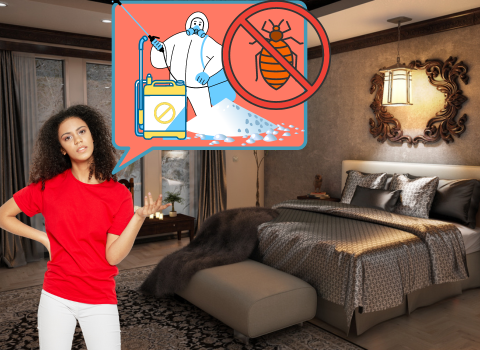
Stopping the Spread of a Bed Bug Infestation in Clothes
Getting rid of bed bugs can be a frustrating and overwhelming experience, but there are steps you can take to stop their spread and get rid of them for good. If you’re dealing with a bed bug infestation in your clothes, don’t panic! With a little patience and some simple strategies, you can stop the spread of these pesky bugs and protect your home from further infestations.
To start, try isolating any infested clothing by placing it in a sealed plastic bag. This will help prevent bed bugs from spreading to other areas of your home. If possible, wash and dry the clothing at the highest temperature possible, as the heat can kill bed bugs and bed bug eggs. If washing isn’t an option, consider using a clothes dryer or a steam cleaner in a high-heat setting.
Once the clothes are clean, store them in sealed plastic bags or containers to prevent any remaining bed bugs from infesting other items. And don’t forget to regularly clean and vacuum your home, paying special attention to areas where bed bugs may be hiding.
Dealing with bed bugs can take time and persistence, but you’re not alone. If you continue to experience a bed bug problem despite your best efforts, consider reaching out to a professional exterminator for assistance. They can provide specialized treatments to eliminate bed bugs and help you regain control of your home.
Removing a Bed Bug Infestation from Luggage
Dealing with a bed bug infestation in your luggage can be a major hassle, especially if you’ve recently traveled or plan to travel soon. But don’t worry, with a little patience and some helpful tips, you can get rid of bed bugs and prevent them from hitchhiking their way into your home.
Isolate and Vacuum
To start, isolate any infested luggage by placing it in a sealed plastic bag. This will help prevent bed bugs from spreading to other areas of your home. Next, vacuum the luggage thoroughly, paying special attention to seams, pockets, and other hidden areas where bed bugs may be hiding.
Wipe the Luggage Down
After vacuuming, wipe down the luggage with a damp cloth and mild detergent. This can help remove any bed bugs or eggs that may be hiding on the surface.
Heat Treat the Luggage
If possible, place the luggage in a clothes dryer in a high heat setting for at least 30 minutes, as the heat can kill bed bugs and bed bug eggs. If you’re unable to use a clothes dryer, consider using a portable bed bug heater or a professional exterminator to treat the luggage. And remember to inspect your luggage thoroughly before and after any trips to help prevent bed bugs from hitching a ride.
With these tips, you can eliminate a bed bug infestation from your luggage and enjoy your travels without any unwanted guests.
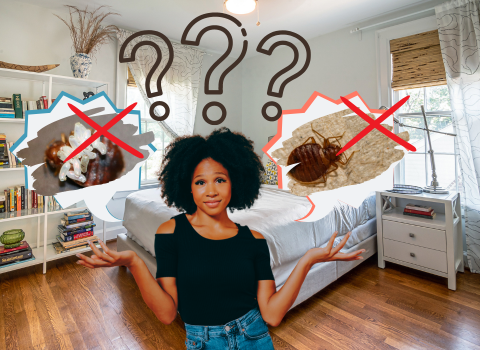
What Exterminators Do to Eradicate a Bed Bug Problem Completely
When facing a bed bug infestation, it can be challenging to know where to start and how to effectively get rid of these persistent pests. That’s where professional exterminators come in! These experts have the knowledge, skills, and tools needed to eradicate a bed bug problem and help you regain control of your home.
Step 1
To begin, an exterminator will conduct a thorough inspection of your home to identify the extent of the infestation and locate areas where bed bugs may be hiding. They may use specialized tools like bed bug detectors and monitors to help pinpoint the location of these pests.
Step 2
Once the infested areas are identified, an exterminator will develop a tailored treatment plan based on the severity of the infestation, the type of property, and your specific needs. This may include a combination of chemical and non-chemical treatments, such as heat treatment, steam treatment, and vacuuming.
Step 3
The exterminator will also guide you on how to prepare your home for treatment and how to prevent future bed bug infestations. They may recommend regular inspections and ongoing monitoring to ensure that the bed bugs are completely eradicated and do not return.
Overall, professional exterminators can provide effective solutions for eliminating a bed bug problem. While the process can be time-consuming and may require multiple treatments, the peace of mind that comes with a bed-bug-free home is well worth the investment.
Chemical Treatments for Killing Off Beds Bugs and Egg Populations – Pros & Cons
Chemical treatments can be an effective way of killing off bed bugs and bed bug eggs, however, there are both pros and cons to using such products.
Pros:
- Chemical treatments can provide quick results when done correctly.
- They can offer a more targeted approach than natural remedies such as heat or cold treatments.
- When properly applied, they can be very effective at eliminating bed bugs in hard-to-reach places or inaccessible areas.
Cons:
- Some chemical treatments may contain hazardous and potentially harmful ingredients that can be toxic to humans and animals if not used according to instructions.
- If not applied properly, these chemicals could cause unwanted damage to property or furnishings.
- Residual effects may remain long after the initial application, leading to potential risks for future exposures.
When it comes to using chemical treatments for killing off bed bugs and their egg populations, it is important to weigh up the pros and cons carefully before deciding on which option is best suited for you!
Using Freezing Methods to Control Bed Bug Populations – Pros & Cons
Freezing methods have become popular for controlling bed bug populations as an alternative to chemical treatments. Here are some pros and cons of using this method:
Pros:
- The freezing process is non-toxic and does not require any hazardous chemicals.
- It can offer a targeted approach that kills off even the most resistant insects.
- This method is effective in treating hard-to-reach areas or inaccessible places where chemical treatments may be difficult to apply.
Cons:
- Freezing temperatures can cause damage to furniture, carpets, and other household items if not used properly.
- It requires specific equipment to be effective.
- It may take longer to achieve results compared to chemical treatments.
Overall, freezing methods offer an effective way of killing off bed bug populations while being relatively safe, however, it is important to consider all the pros and cons carefully before deciding on which option is right for you!
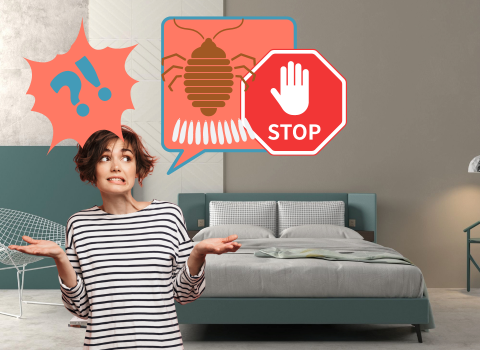
Utilizing Heat to Combat an Existing infestation -Pros & Cons
Heat treatments are an effective way of controlling existing bed bug infestations and can be used as a stand-alone solution or in conjunction with other methods. Here are some pros and cons of using this method:
Pros:
- Heat treatments are non-toxic, which means they won’t cause any harm to humans, animals, or the environment.
- This method is often more cost-effective than chemical treatments.
- Heat treatments can eliminate even the most resistant bed bugs, bed bug eggs, and larvae in a relatively short period.
Cons:
- Bed bugs can hide in certain areas where the heat cannot reach them, leading to potential future outbreaks.
- The heat must be sufficiently hot enough to kill off bed bugs and bed bug eggs effectively, which can be difficult to achieve with household equipment.
- High temperatures may cause damage to furniture and carpets if not applied correctly.
Overall, heat treatments offer an effective way of eliminating an existing infestation but it is important to consider all the pros and cons carefully before deciding on which option is best suited for you!
Applying Steam to Get Rid Of an Existing Infestation- Pros & Cons
Applying steam to get rid of existing bed bug infestations is a popular method that can be used as a stand-alone solution or in conjunction with other treatments. Here are some pros and cons of using this method:
Pros:
- Steam treatments are non-toxic and introduce no chemicals into the environment.
- This method is often more cost-effective than chemical treatments.
- Steam can penetrate deep into furniture, carpets, and other materials to kill off any bed bugs, eggs, and larvae hiding in hard-to-reach places.
Cons:
- The steam must be sufficiently hot enough to achieve results, which can be difficult to achieve with household equipment.
- High temperatures may cause damage to walls, furniture, carpets, and other materials if not applied correctly.
- Bed bugs hide in certain areas where the steam cannot reach them, leading to potential future outbreaks.
Overall, applying steam offers an effective way of eliminating an existing infestation but it is important to consider all the pros and cons carefully before deciding on which option is best suited for you!
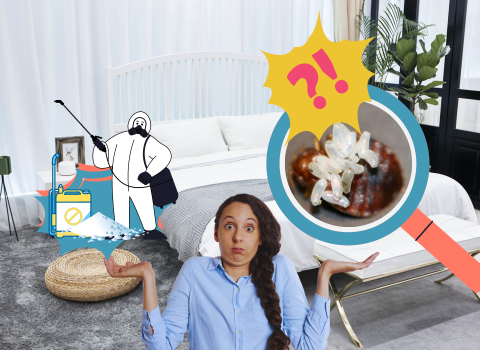
Signs To Look for When Checking for Signs of a Potential Infestation
Checking for signs of a potential bed bug infestation can help you identify and eliminate infestations before they become a major problem. Here are some common signs to look out for when checking for a potential infestation:
- Fecal spots on mattresses, headboards, furniture, and walls. These are small black or brown stains that bed bugs leave behind as they feed.
- Shed skins from the bed bugs’ molting process.
- A musty odor in the areas where the bed bugs may be hiding.
- Live bed bugs or eggs in dark, sheltered crevices such as cracks in the walls and furniture, under carpets, or behind skirting boards.
If any of these signs are present, it is important to act immediately – inspect the area further and contact a professional pest control expert if necessary.

